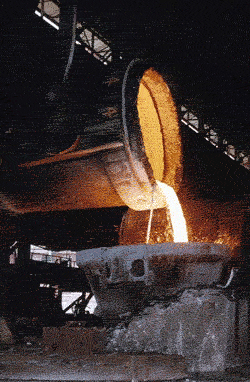Week 5 - Fluid Technologies
3. Viscosity Review
Viscosity Review
Textbook Readings
ScienceFocus 8
Pages 39 - 41
or
Science in Action 8
Pages 66 - 68
 |
"You're as slow a molasses in January! "
|
 |
A few lessons ago you learned what that statement means. If you have heard it spoken to you, it was probably by your parents when you didn't want to do something - like clean your room. You learned in the previous lesson that the seasonal temperature changes affect the flow of fluids including molasses.
In this lesson we are going to investigate various technologies that depend on fluids to have fairly specific viscosities. For example, how would you like your ketchup to run like water?
Background Information
Viscosity is an internal property of a fluid that offers resistance to flow. For example, pushing a spoon with a small force moves it easily through a bowl of water, but the same force moves mashed potatoes very slowly. In fact, one of the major differences between styles of mashed potatoes is the viscosity of the starchy mass: some people like their potatoes running and teeming with milk and butter (they are fans of low-viscosity potatoes), while others like their potatoes drier and stickier, so they almost crack rather than flow (these people are devoted to high-viscosity potatoes).
http://www.spacegrant.hawaii.edu/class_acts/ViscosityTe.html
| Let's go back for a moment and review the factors that affect viscosity. 1. Viscosity can be defined as the amount of friction or internal resistance a fluid has. 2. If it has a high viscosity it will be thick and flow very slowly. 3. Thin runny fluids are said to have a low viscosity. 4. So what do we know of that affects the viscosity of a fluid? Temperature! That means if a industry can control the temperature of a fluid it can generally control the viscosity of that fluid. For example, in order easily mold steel it must be heated so that it has a low viscosity and can be poured into molds. |
 |
|
The Alberta Tar Sands
 |
Alberta Oil Sands
(See attached file: Alberta Oil Sands Fact Sheet.pdf) http://www.oilsands.alberta.ca/FactSheets/The_Facts_Aug2011.pdf (See attached file: Oil Sands 101) http://www.imperialoil.com/Canada-English/operations_sands_glance_101.aspx |
|
Experiment Time: Motor Oil
 
|
|
© 2002 Alberta Online Consortium
|